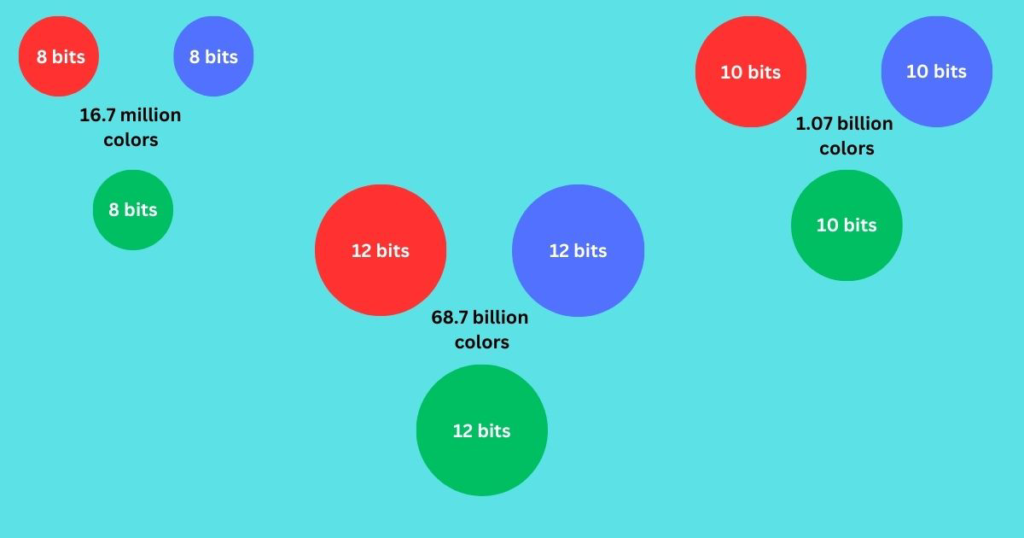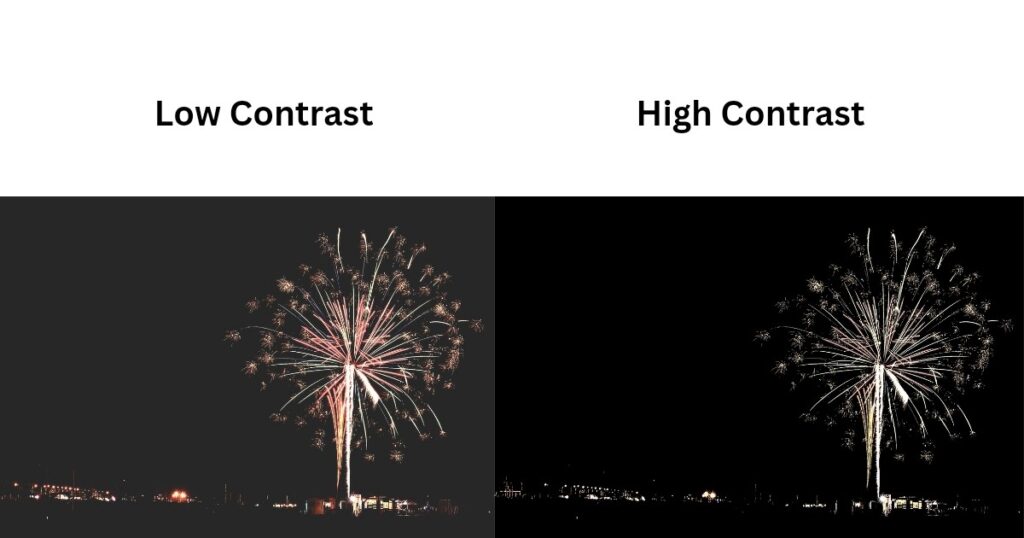Have you ever wondered how many colors a TV can display? Some say millions, while others claim it’s even more than a billion. But what’s the truth behind these numbers?
The secret lies in the TV’s bit depth, or color bit depth, which determines the range of colors it can display.
But before understanding what color bit depth in a TV is, it is important to know how colors are produced on a TV screen.
For that, we need to know about pixels and subpixels.
What is a pixel in a TV?
The TV screen that you see is made of several tiny pixels or picture elements.
A pixel is the smallest element of a TV screen. It is any one of the millions of such elements which together form the display.
Subpixels: TV’s color pixels
Each tiny pixel on your screen is made up of three even tinier subpixels, each responsible for emitting a different colour of light: red, green, and blue. Can you guess how you see a white color on a TV?
Red, green and blue, these three colors are used to create the color white on a tTV screen.
The subpixels are intricately controlled by the TV’s electronic circuitry, which meticulously regulates their intensities to produce the full spectrum of colours that we see on the display.
Now, let’s discuss in detail how these subpixels achieve this feat of color reproduction on TV.
How are colors reproduced on a TV screen?

Instead of individually creating each native colour, the primary RGB subpixels (red, green, and blue) are used to generate the entire spectrum of colors.
Let’s unravel the fascinating logic behind how these subpixels are finely tuned to form the rich and varied palette of colours that grace our screens.
- When you see the colour blue on your screen, it’s because the red and green subpixels take a break while the blue subpixel goes all out, shining bright with full intensity. This team effort creates that beautiful blue hue you see.
- When displaying the colour cyan, the blue and green subpixels shine at their full intensity, while the red subpixel takes a break.
- When displaying the colour magenta, the green subpixel is switched off while the red and blue subpixels shine at their full intensity.
- Similarly, to display yellow, the blue subpixel is turned off while the red and green subpixels are made to glow at the full intensity.
- When all three subpixels are at full intensity, they combine to create a vibrant white color on the display. Conversely, when all three subpixels are turned off, the screen shows a deep, dark black color.
Thus, by controlling the intensities of the red, green, and blue subpixels, modern TVs can display millions and even billions of colours.
The more precisely these subpixels are controlled, the more detailed and vibrant the images on your TV screen can be.
For example, OLED TVs can completely shut off their subpixels, resulting in true blacks, while LCDs attempt to achieve a similar effect through local dimming.
What is color bit depth?

Having done with how colors are produced on a TV screen, let’s see how many colors a TV is capable of reproducing on its screen.
You must have seen terms like 1 billion colors in the TV specifications. But how a TV is claimed to reproduce those number of colors points to a new concept known as color bit depth or simply, bit depth.
Let’s first understand what a bit is.
A bit refers to a binary digit that can exist in one of two states: either a 1 or a 0, representing high or low logic levels, respectively.
Those RGB subpixels which we talked about, are essentially individual bits that go high or low to create various colors on a TV screen.
Bit depth or color bit depth is related to the number of subpixel bits in a TV.
Let’s delve into the connection between a TV’s bit depth and the number of colors it can show.
How is color bit depth related to the color reproduction range of a TV?
Let’s consider a hypothetical scenario of a 1-bit display. In this case, we have 1 set of the three primary subpixels: red, green, and blue (RGB). The colour of each pixel on display is determined by the combination of these three colors.
If the red bit is high, the green bit is high, and the blue bit is low, the display will show the colour yellow, which is a mixture of red and green. When all three bits are high, the result is white, while with all three bits low, the screen will appear black.
So, how many colors can be displayed on this 1-bit system?
Taking into account all the possible combinations of the three bits, we can have white, red, green, blue, yellow (resulting from the combination of red and green), magenta (from red and blue), cyan (from blue and green), and black.
This means there are a total of 8 distinct colours that can be produced by toggling the red, green, and blue bits on this 1-bit display.
In summary, for each of the red, green, and blue components, there are two possibilities: either the bit can be high or low, yielding a total of 2×2×2 = 8 unique colour combinations on the 1-bit display.
But are these colors enough to display a scene?
Imagine a breathtaking sunrise, with the sky blending countless shades of color. To faithfully capture all those hues, a TV needs a high color bit depth to bring the scene to life.

How many colors on an 8-bit display?
Let’s take the example of an 8-bit display, which offers 8 shades of red, blue, and green each.
Considering the colour red, it’s fascinating to note that all its eight different shades can combine and create an array of colours. Considering this, each shade can be either high or low, resulting in two possibilities for each shade.
As a result, the total number of possibilities for red equals 2 multiplied by itself 8 times, which equals 256. This means that instead of just one red, there are 256 different possible shades of red.
Similarly, there are also 256 possible shades of green and 256 possible shades of blue in an 8-bit display.
When we consider the total number of colours that can be displayed on an 8-bit display, it equals 256 multiplied by 256 multiplied by 256, resulting in an astounding 16.7 million colours. This is in stark contrast to the hypothetical 1-bit display, which could only display 8 colours.
Fascinating, isn’t it? But wait, there’s more to come…
How many colors on a 10-bit display?
Let’s increase the number of bits to 10.
Now, the total number of possible colours in the 10-bit display is 210 x 210 x 210=1.07 billion.
With just an increase of 2 bits, the number of possible colors in a 10-bit display jumps to a whopping 1.07 billion.
But wait, it gets even more impressive..
How many colors on a 12-bit display?
Let’s further increase the number of bits to 12. Now, the number of all possible colors= 212 x 212 x 212= 68.7 billion.
By making it 12 bits, colors achieved are a staggering 68.7 billion!

Surprisingly, though, this number still falls far short of what our eyes can perceive.
Anyway, from 8 colors in a single bit to 68.7 billion colors in 12 bits.
Not a small improvement!!
The dynamic HDR formats like Dolby Vision and HDR10+ can theoretically support up to 12-bit color depth.
However, they practically master the HDR content at 10-bit color depth since most of the modern displays having wide color gamut can support only up to 10-bit color depth.


